By Ludwig H. Dyck
On January 26, 1944, in the midst of the Ukrainian winter, the tanks of Gen. Ivan S. Konev’s 2nd Ukrainian Front (army group) battered their way through the German defenders of Kapitanovka. Lt. Gen. Nikolaus von Vormann of the XLVII Panzer Corps, summed up the spectacle: “Regardless of the losses—and I mean regardless of losses—masses of Soviets about midday streamed westwards past the German Panzers which were firing at them with everything they had.” Two days later, the 2nd Ukrainian Front linked up with Gen. Nikolai F. Vatutin’s 1st Ukrainian Front at Zvenigorodka. “We’ve done it this time, I’ve got the Germans in the pincers and I’m not letting them slip out again,” said Konev.
Centered around the airfield at Korsun, a salient of Army Group South clung onto the western bank of the Dnieper River between Kánev and Cherkassy. Field Marshal Erich Von Manstein, commander of Army Group South, had flown to see Hitler at Rastenburg, demanding to pull back his dangerously exposed right wing. Dreaming of reversing the tide of the war, the Führer of Nazi Germany refused. By doing so, he enabled Marshal Georgy K. Zhukov, Stavka’s (Soviet high command) chief director of the Ukrainian theater, to pull off the largest encirclement of German forces since Stalingrad.
Since its defeat at Kursk the previous summer, the Third Reich had lost the initiative to the Soviets. Numerical and material superiority allowed the Soviets to choose when and where to attack. Fire brigades of elite German units contained Soviet breakthroughs, but inevitably the front was pushed back westward. But the withdrawing Germans exacted a heavy toll. Between July 1 and September 30, 1943, the Red Army suffered four casualties for each German one.
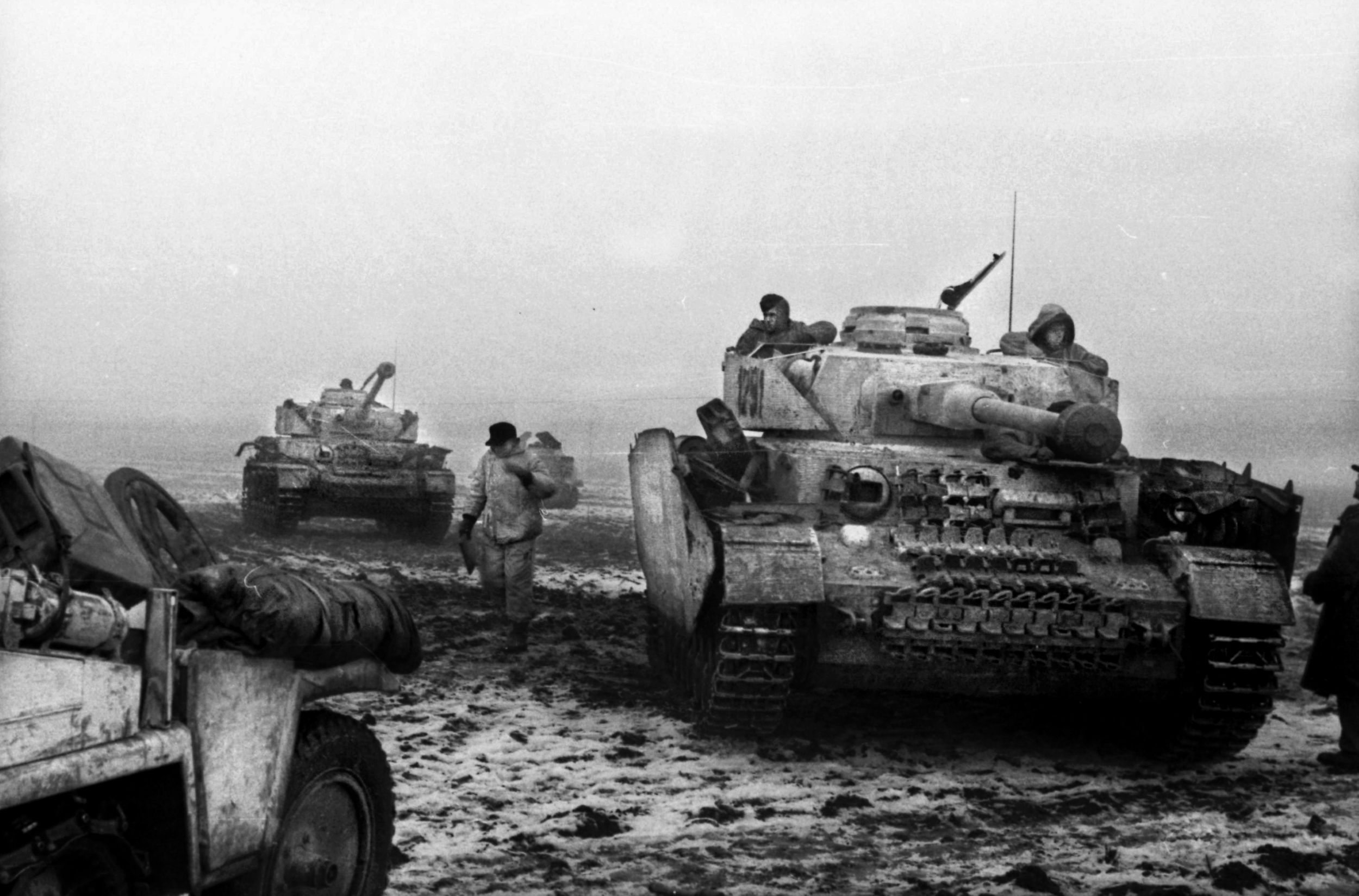
Konev had opened the battle on January 25, unleashing an intense artillery barrage on the German lines west of Burtki. Expecting a major attack, the thinly stretched Germans could do little but ready themselves as fog prevented air support. The weather would play a crucial role in the battle, with unseasonable warming alternating with freezing temperatures turning the roads into mud, then ice, and back again.
Seven rifle divisions supported by tanks, overwhelmed the 1,500 men of the 389th Infantry Division at the juncture of XI Corps and XLVII Panzer Corps. Exploiting the breakthrough, the 20th and 29th Tank Corps of Col. Gen. Pavel A. Rotmistrov’s 5th Guards Tank Army struck towards Zvenigorodka via Kapitanovka. Von Vormann counterattacked from the south with the depleted 11th and 14th Panzer Divisions. During chaotic fighting around Kapitanovka, von Vormann temporarily severed the Soviet penetration. Rotmistrov ordered his spearheads to keep advancing, relying on the 18th Tank Corps and 5th Cavalry Guard Corps to reopen the corridor.
A day after Konev, Vatutin launched his offensive with the 6th Tank Army. The main attack southeast from Tinovka against VII Corps of Gen. Hans-Valentin Hube’s 1st Panzer Army quickly bogged down. However, a secondary effort at Koshevatoe shattered the link between the 198th and 88th Infantry Divisions. A wedge was driven between VII Corps, to the west, and XXXXII Corps, to the northeast.
“Waves of 132mm rockets added to the cacophony with their howling noise. We only had a few seconds to get our weapons and our clothes before we jumped down in the narrow ditch we had dug and covered with logs, earth, and hay. A few minutes later only pathetic fragments remained of the hut we had just left,” wrote Capt. Georg Grossjohan of the 198th Division.
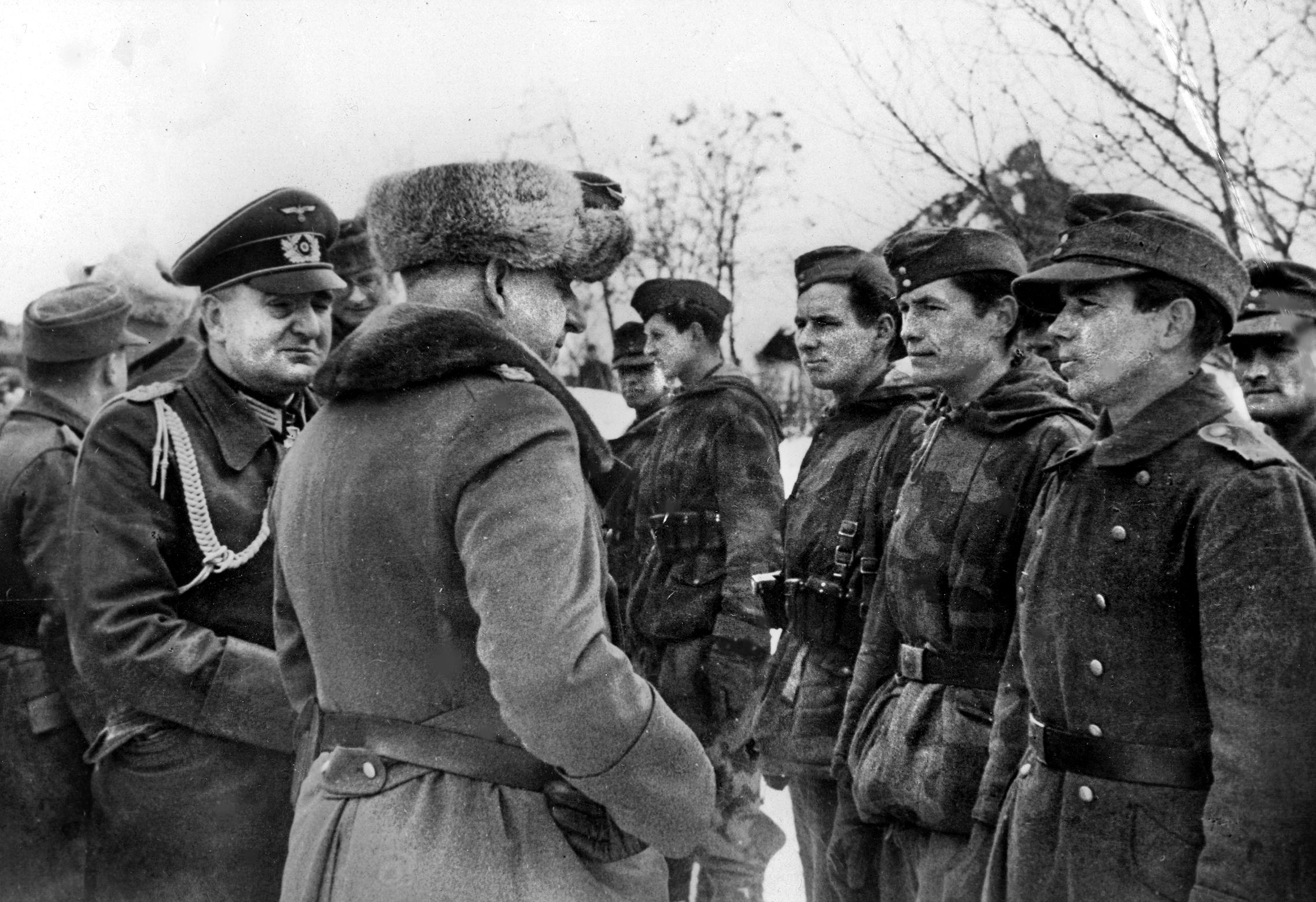
In savage fighting, the two Ukrainian Fronts closed the encirclement at Zvenigorodka on January 28, trapping two German corps. In the northwest was Lt. Gen. Theo-Helmut Lieb’s XXXXII Corps, part of the 1st Panzer Army, consisting of Corps Detachment B (remnants of the 112th, 255th and 332nd Infantry Divisions) and the 88th Infantry Division. The southeast of the oblong pocket was held by Gen. Wilhelm Stemmermann’s XI Corps, belonging to General Otto Wöhler’s 8th Army. Eleventh Corps consisted of the 5th SS-Wiking Panzer Division, the SS-Assault Brigade Wallonien, and the 57th, 72nd and 389th Infantry Divisions. Dispersed among the two corps were additional artillery batteries, an assault gun battalion and infantry battalions. There were a total of 59,000 men, including 5,000 “Hiwis” (Hilfswilligen)—Russians and Ukrainians who aided the Germans.
Stemmermann was placed in overall command of the encircled troops, referred to as “Group Stemmermann.” Its prospects looked bleak, as many of the divisions were so under-strength that they were considered unsuitable for offensive operations. There was a lack of anti-tank weapons and only 40 battle-worthy tanks and self-propelled guns. Stemmermann had wisely set aside what supplies he could. Local horse-drawn sledges (panjes) were pressed into service to deliver supplies to the combat groups from 23 Ju-52s that landed at Korsun on January 29. During the weeks to come, VIII Air Corps braved adverse weather, Soviet flak, and fighter planes, to provide critical supplies and evacuate wounded.
Overestimating the number of troops trapped, Zhukov passed up an advance to the Southern Bug River and threw both Ukrainian Fronts against the pocket. Stemmermann shifted forces to the southwest to keep the Soviets from widening their corridor of penetration. Corps Detachment B stiffened the defense of the hard pressed 88th Infantry Division behind the Ros River. Fighting raged in Stebliv, Olshana, Selyshche and Kvitki. At Olshana, four assault guns from SS-Wiking came to the rescue of a replacement battalion and rear service units and routed the Soviets in night fighting. The German defensive successes were offset on the northern perimeter of the pocket, where the 27th Army advanced over territory relinquished by Corps Detachment B.
Relying on infantry at his eastern flank, von Vormann concentrated his armor further to the west and closer to the pocket. From February 1 onward, XLVII Panzer Corps focused on crossing the Shpolka River and closing the gap. The 11th Panzer Division captured a bridge at Iskrene, but it collapsed as the second Panther crossed and engineers worked frantically to repair it. The timely arrival of 3rd Panzer Division defended 11th Panzer’s right flank against counterattack by Rotmistrov’s 49th Rifle Corps and 29th Tank Corps.
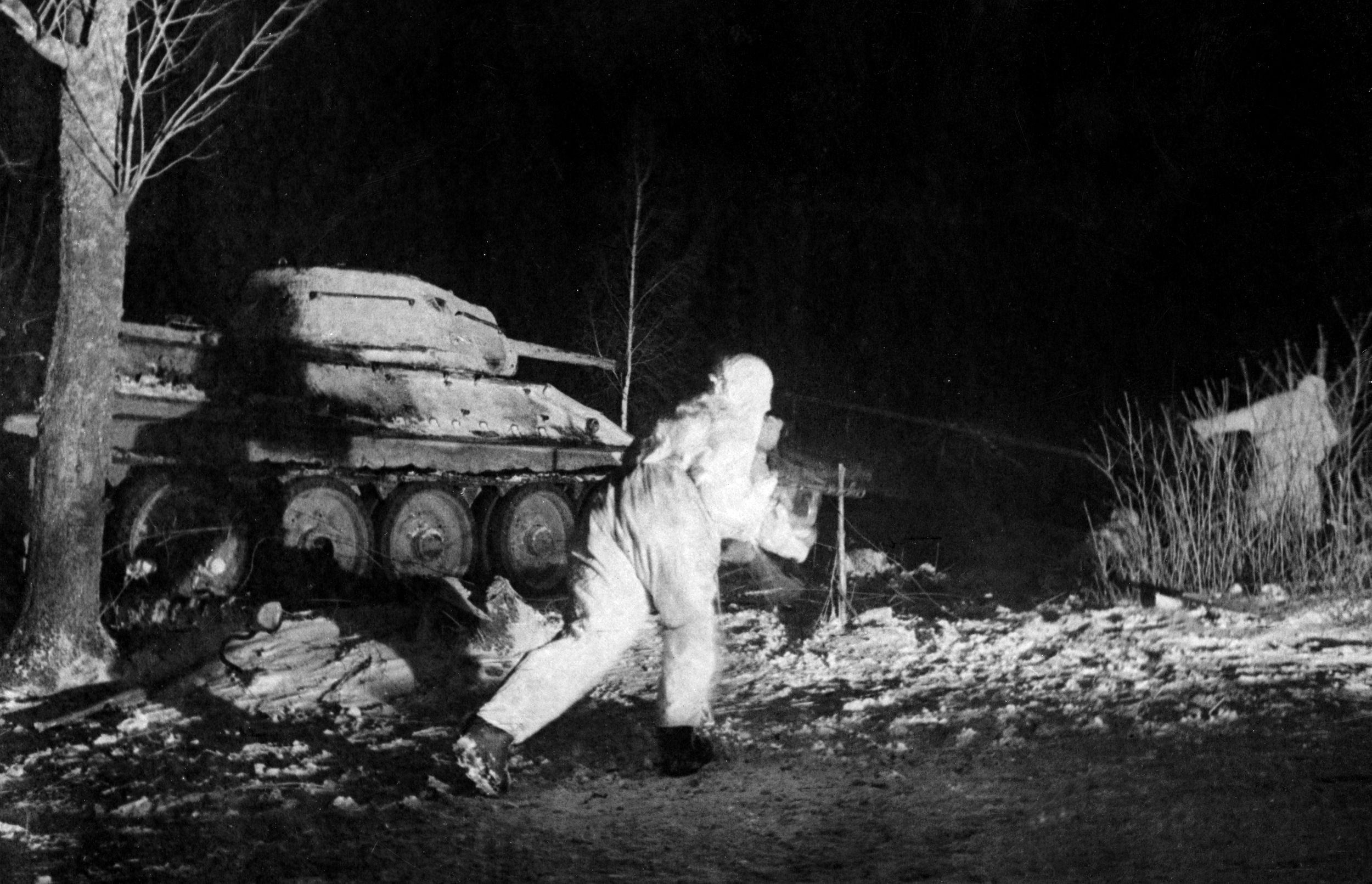
Flying in support of the Panzer Divisions was Capt. Hans-Ulrich Rudel of the “Immelmann” dive bomber wing. West of Nowomyrhorod, Rudel dove his cannon-armed Stuka down upon a formation of IL-2 Sturmoviks—Soviet ground attack aircraft nicknamed “Iron Gustav” by the Germans because of their heavy armor. “It is a longish shot, but I get one of the ungainly birds into my sights and loose off a round of anti-tank ammunition from each of the slow firing cannons. The Gustav becomes a ball of flame and disintegrates into a rain of fiery particles,” wrote Rudel. Rudel dodged Soviet fighters until the threat of German fighters drove them away.
Von Vormann anxiously awaited the arrival of the 24th Panzer Division. He planned to launch a major relief attack in conjunction with Hube’s 1st Panzer Army. The latter had been busy encircling and destroying part of the 1st Tank Army in the Balabanova area. As a result, Hube had not mounted any meaningful attempt to rescue Group Stemmermann. This was about to change with Operation “Wanda.” It took days for the troops to be moved east to the staging area in the sector of VII Corps. Rail-transport was used when possible since the roads only deteriorated further with the movement of the Panzer divisions. Bridges needed to be reinforced to support the 45-ton Panthers and 57-ton Tigers.
In “Wanda,” General Hermann Breith’s III Panzer Corps was meant to advance north across the Gniloy Tikich River and then sweep east toward the pocket via Medvin. In the process, the 6th Tank and the 5th Guards Tank Armies were to be enveloped between III and XLVII Panzer Corps. Spearheading III Panzer Corps were the 16th and 17th Panzer Divisions, alongside Heavy Panzer Battalion 506, the ad hoc Heavy Panzer Regiment Bäke and StuG. Battalion 249; a total of 126 tanks and assault guns. In addition, Breith counted on reinforcements of another 150 tanks and assault guns from 1st SS Panzer Division Leibstandarte and the 1st Panzer Division. This was a very large armor force for the Germans in 1944.
On February 4, Breith’s mailed fist broke through the infantry, antitank guns and minefields of the 104th Rifle Corps north of Novaya Greblya-Bagva. Elements of the 16th Panzer Division captured Kosyakovka on the Gniloy Tikich, but found the bridges blown. Soviet resistance increased by the day, with the 2nd and 6th Tank Armies and the 40th Army hammering at the German penetration. The 34th Infantry Division and units from Leibstandarte were hard put to defend the western flank around Tinovka. Although Lieutenant-Colonel Franz Bäke claimed 31 out of 40 Soviet tanks knocked out in the fighting for Kosyakovka, 16th Panzer Division was forced to relinquish the settlement. Third Panzer Corps was more successful on the eastern flank, where the 1st and 17th Panzer Divisions, Bäke’s regiment and the 198th Infantry Division, seized Vinograd and Repki.
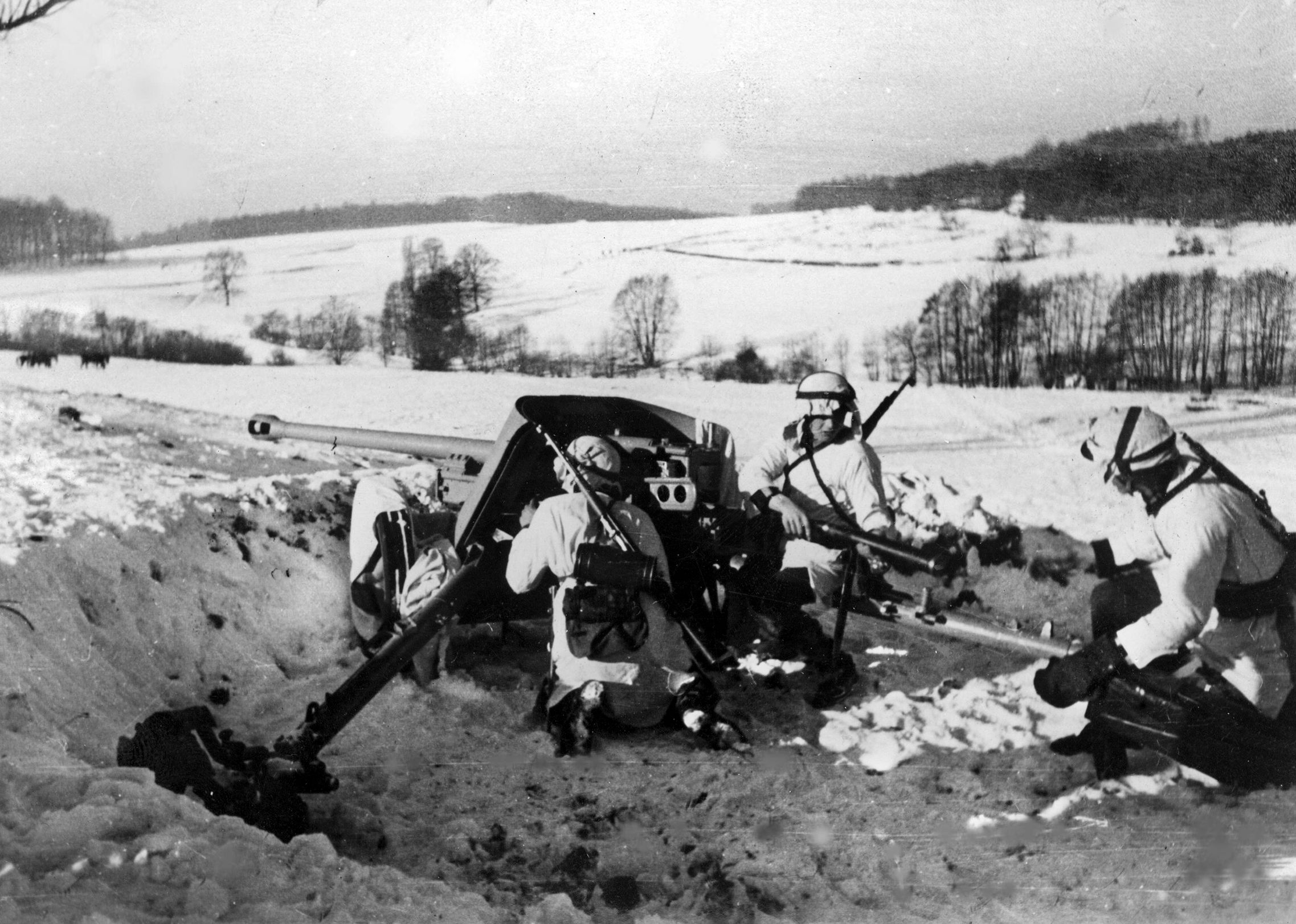
The XLVII Corps had a shorter distance to cover than Breith. However, von Vormann only had 58 operational tanks and assault guns on February 4 and his exhausted men were already engaged against Soviet counterattacks. To top it off, on Hitler’s personal order, and despite Manstein’s objections, the 24th Panzer Division, which had just completed its laborious journey, was ordered to return to the 6th Army to aid in the fighting around Nikopol. Von Vormann was thus reduced to spoiling attacks.
The mud added to the misery of all. In some places, only tracked vehicles could move. Panthers churned through the muck in low gears. Even the wide tracks of T-34s sometimes got bogged down. Fuel consumption was up to five times higher than normal. Critically wounded died as it took too long to evacuate them. Soldiers marched barefoot, losing their boots the mud. “All logistical tasks had to be carried out by horses, as wheeled vehicles got stuck. Local women and teenagers carried ammo rounds over their shoulders, sinking knee-deep in the mud,” remembered Lt. Aleksandr M. Fadin of the 22nd Tank Brigade.
Luftwaffe fighters focused on protecting the Ju-52s supplying the Panzer spearheads. Flying low, the Ju-52s dropped petrol barrels into the mud. Since the barrels often landed 200-300 yards from the tanks, steel wires were attached to winch them in. With ammunition and fuel being prioritized, the Panzer crews and grenadiers received little food. Unlike their machines, the men were expected to go on fighting with empty stomachs.
Fresh reinforcements from the 5th and 7th Guards Armies intensified attacks against the pocket. Group Stemmermann let go of its hold on the Dnieper. On February 6-8, Cossacks from the 5th Guards Cavalry Corps and rifle divisions from the 4th Guards and the 52nd Army, attempted to split the pocket. In house-to-house fighting among burning log huts (isbas), the 72nd Infantry Division defended Valiava and, backed up by armor from SS-Wiking, frustrated Soviet efforts to sever the road between Korsun and Dashukivka.
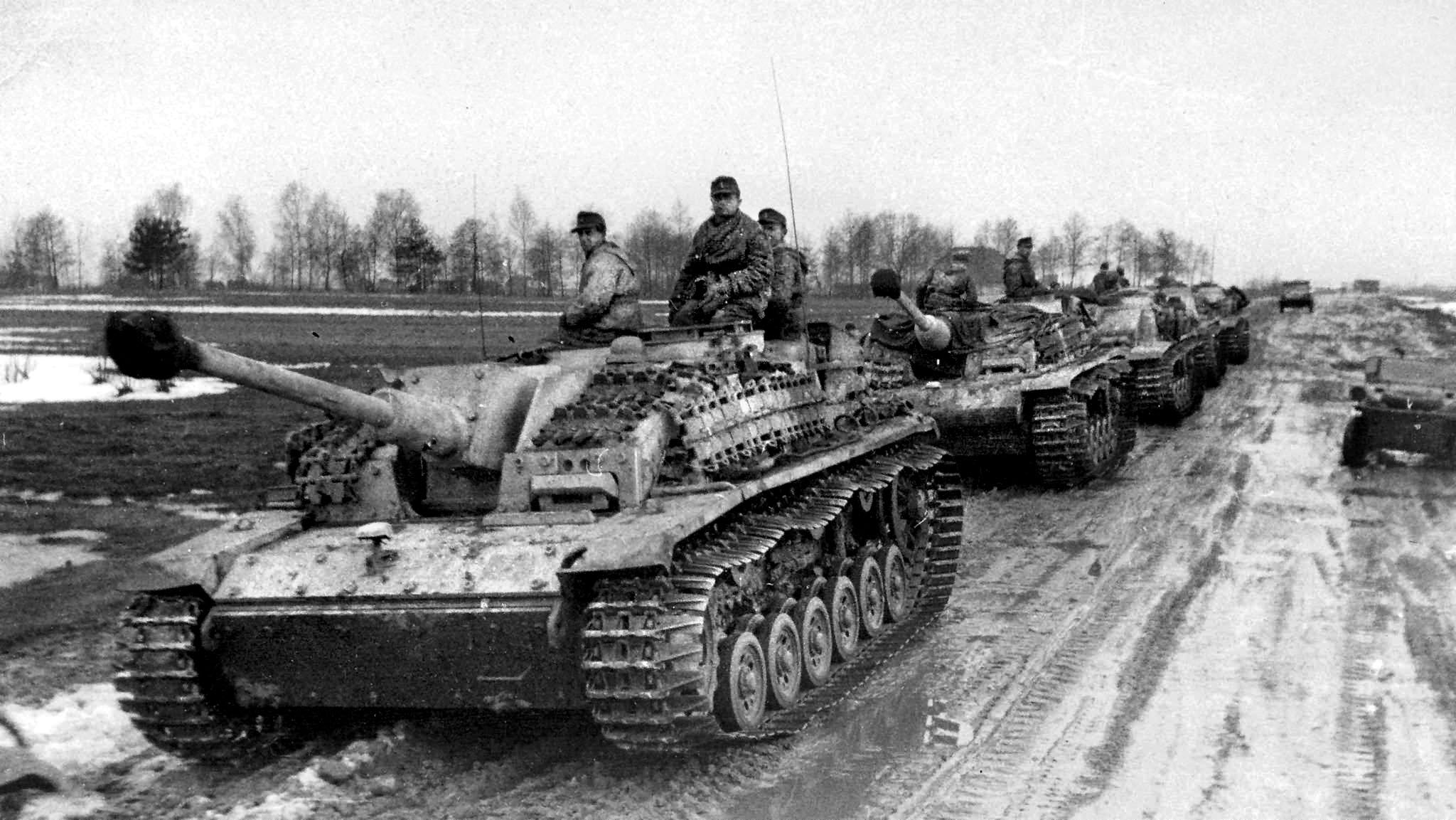
A Soviet envoy arrived under a white flag at the front of the 258th Regiment, Corps Detachment B, and offered surrender terms. The envoy was treated to a glass of French Cognac, told that he would receive an answer in due time, and sent on his way. Further efforts to undermine German morale were made by men of the Free Germany National Committee. Wearing German officer uniforms, they infiltrated the pocket. The committee was made up of exiled German communists and turncoat prisoners of war. Its vice president, Gen. Walther von Seydlitz, addressed the surrounded troops by transmitter. He promised safety, food and shelter. Millions of leaflets bearing the same message were dropped by plane. None had any impact on the steadfastness of Group Stemmermann.
Efforts to split the pocket failed when Stemmermann carried out a timely withdrawal from the southeastern part. By February 10 the pocket had shrunk to a triangle with Moryntsi at the top, Stebliv at the western base and Korsun at the eastern. Although the airfield of Korsun was already under artillery fire, VIII Air Corps continued to fly supplies in at night.
Slowed by the mud and Soviet resistance, III Panzer Corps abandoned its grand north-east sweep in favor of a direct thrust east to Group Stemmermann. Lying in the path was once again the Gniloy Tikich. Battlegroup (Kampfgruppe) Bäke, Battlegroup Frank of the 1st Panzer Division and the 16th Panzer Division, established infantry and tank bridgeheads at Bushanka and Frankovka. One of Bäke’s Panthers was first to cross over a captured bridge at Frankovka. Its crew earned themselves eight days of leave. The radio message of “We are coming. Bridgehead at Frankovka 11.00,” was sent to Stemmermann.
On the morning of February 13, Bäke, with parts of the 16th Panzer Division on his left flank, advanced across the river in the direction of Dashukivka. When two T-34s were spotted driving suspiciously into a small depression, Bäke called for air support. Alerted by white flares fired from the German tanks, Stukas came screeching down upon more T-34s lying in ambush. Flushed out into the open, the T-34s fell victim to the 88s of Bäke’s Tiger battalion firing at a distance of 2,000 yards. More T-34s appeared and attempted to outflank the Tigers, but were engaged by Bäke’s Panther battalion and Panthers of the 16th Panzer Division. Stukas smashed Soviet anti-tank gun positions. When it was all over, the Germans claimed to have knocked out 70 Soviet tanks and 40 anti-tank guns for a loss of five Tigers and four Panthers. Dashukivka, Chesnovka and Khizhintsy were captured. An impressed Manstein radioed III Panzer Corps, “Bravo—despite the mud and Russians, already much has been accomplished. Now it is about the last step. Teeth together and forward.”
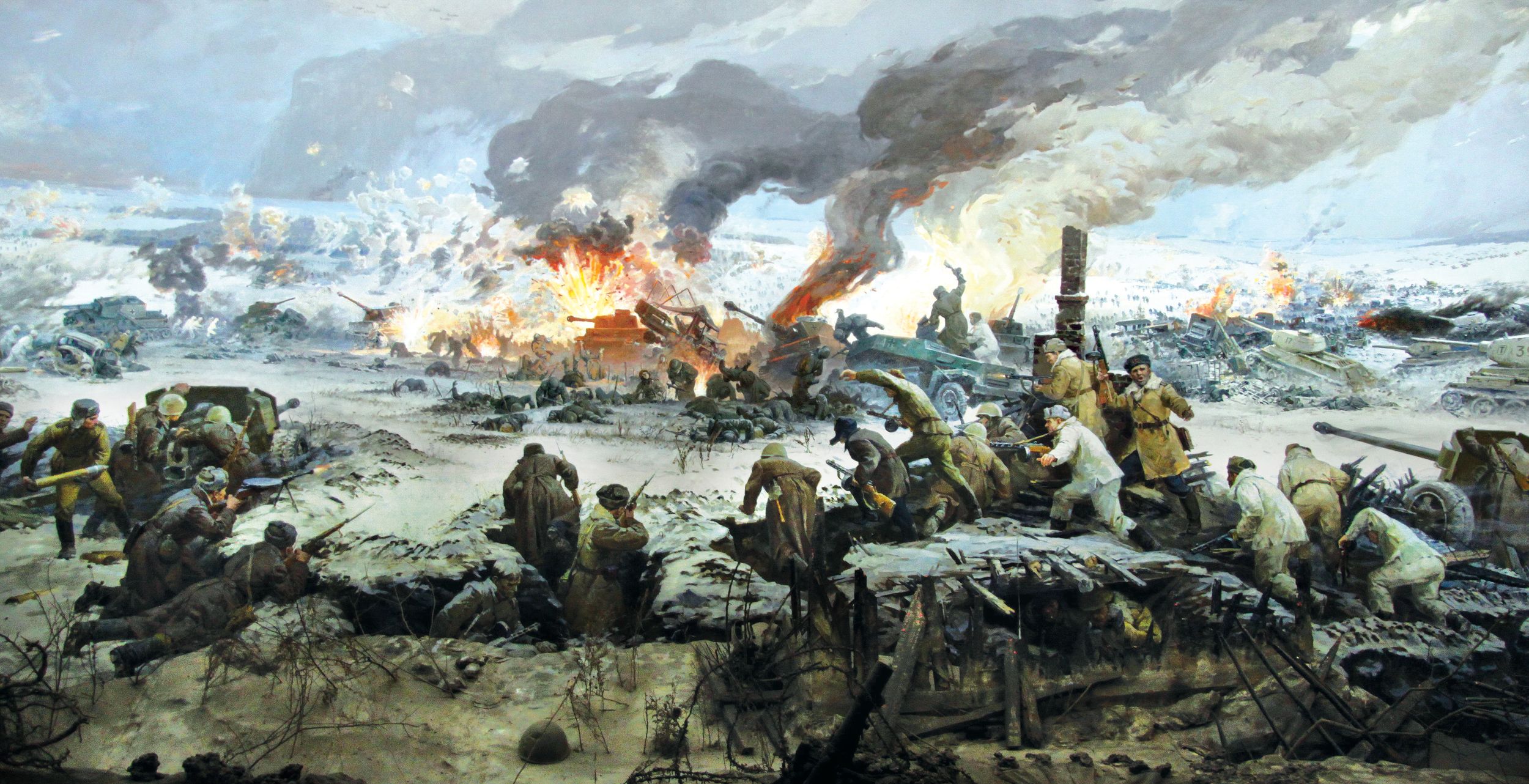
Lieutenant colonel Heinz W. Frank’s Battlegroup, cleared heavily defended Lysianka further east on the Gniloy Tikich. Supported by Stukas, the Panthers and grenadiers established a bridgehead over a ford to the northern side. Large elements of Frank’s parent 1st Panzer Division were stuck in the mud south of Lysianka. Leibstandarte, the remainder of 16th, and the entire 17th Panzer Division, were defending on the northern flank of III Pz Corps. Meanwhile, the 198th and 34th Infantry divisions were engaged with the 40th Army at Vinograd and Tinovka.
Von Vormann kept attacking to take pressure off of III Panzer Corps. With grenadiers hitching a ride, tanks of the 11th Panzer Division bridged the Shpolka River at Yerky. North of the town, they were hit by mortar shells. As the infantry took cover, Soviet antitank guns opened up. The antitank guns were shot up by the Panthers, which suffered no losses. However, by February 13, only 3 of 20 Panthers were capable of combat due to lack of fuel. The Iskrennoye bridgehead had meanwhile been abandoned. Efforts by the 13th Panzer Division to force another crossing at Yurkivka were frustrated by tenacious Soviet resistance.
Like their machines, the men were getting worn out. Many German soldiers had been affected by the so-called “Volhynian fever,” a type of typhoid disease, including Maj. Gen. Gustav von Wietersheim who needed injections in order to keep commanding his 11th Panzer Division. Further adding to their woes, were worn out socks and boots, frostbite, trench foot, and lice.
SS-Wiking captured Shenderivka on February 11. The village became the main base for the anticipated breakout. To further shorten the distance to III Panzer Corps, Stemmermann attacked towards the villages to the southwest. Camouflaged in their snow smocks, the remaining 689 grenadiers of Major Robert Kaestner’s 105th Regiment surprised and overcame the first Soviet defensive belt. Around midnight, Kaestner called forth a self-propelled 20mm antiaircraft gun which shot up a Soviet fuel column on the outskirts of Novo Buda. The trucks exploded in huge fireballs. While Kaestner seized Novo Buda, two other regiments of the 72nd Infantry Divisions, alongside elements of SS-Wiking and SS-Wallonien, took Komarivka and Khylky.
Alarmed by the German advances, Stalin put Konev in command of all forces around the pocket. Group Stemmermann’s gains in pushing closer to the relief forces necessitated pulling back from its eastern periphery. On February 13, the Soviets occupied the airfield at Korsun, where the ground had become so soft that planes were hardly able to take off anyway. Now everything depended on reaching III Panzer Corps.
Breith landed in a Fieseler Storch observation plane at Lysianka to personally assess the situation. A small but steeply banked stream impeded Frank’s advance northeast to Oktyabr. In the dim light of dusk, Sergeant Hans Strippel’s Panther knocked out two camouflaged T-34s guarding a 40-ton bridge across the stream. The capture induced Breith to switch the main effort from Bäke and 16th Panzer Division, who faced unsuitable tank terrain east of Khizhintsy, to Frank.
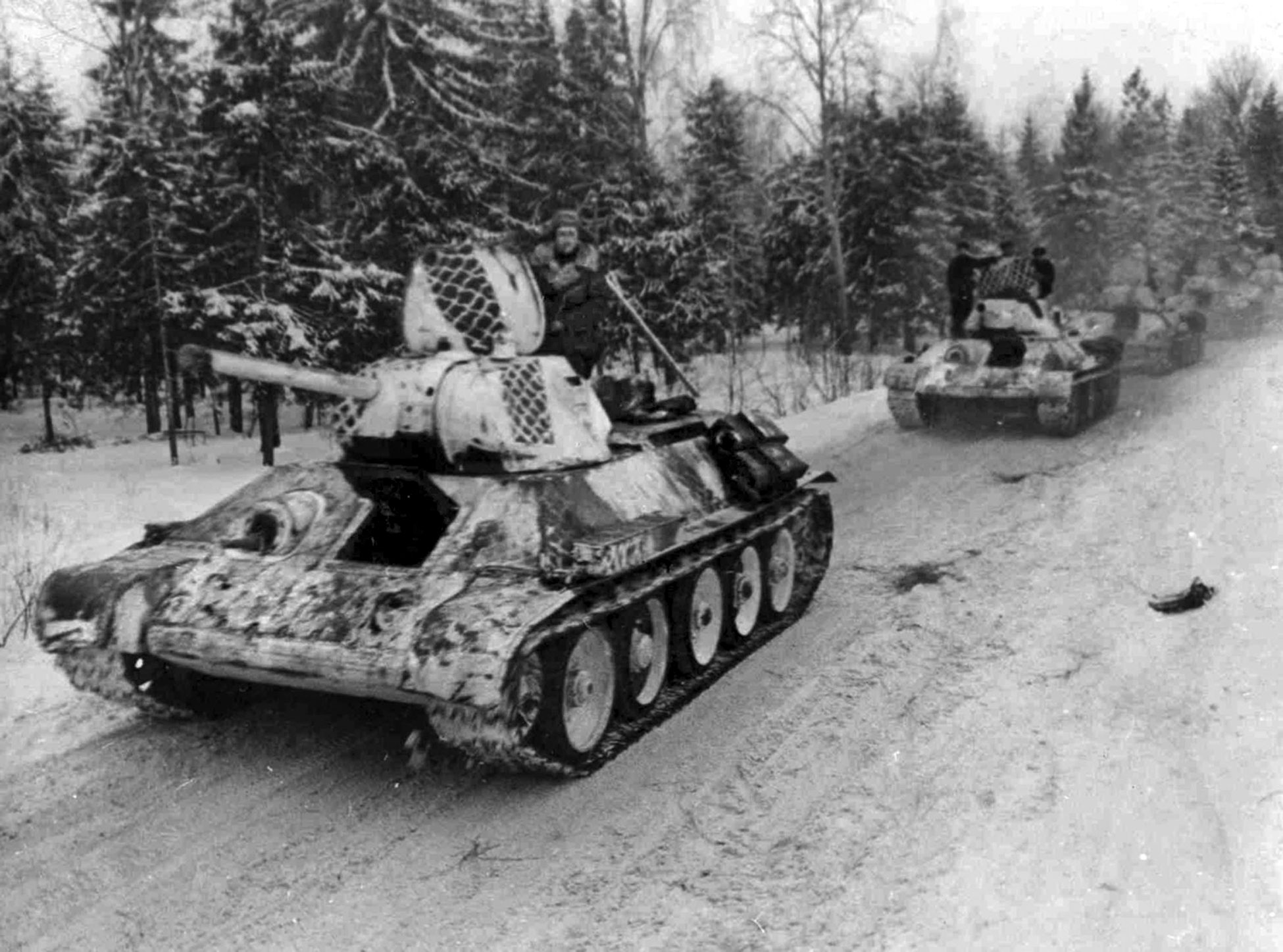
To oppose III Panzer Corps, the 18th Tank Corps took position at Zhurzhyntsi. In addition, two tank brigades of the 20th Tank Corps advanced toward Lysianka. North of Khizhintsy, Bäke’s six Panthers destroyed eight T-34s with a loss of three Panthers. Veering south of Khizhintsy, Bäke’s six Tigers brewed up 11 more Soviet tanks. Several Tigers were hit and immobilized. Frank got reinforcements from Leibstandarte; grenadiers piled upon a single StuG, PzKw IV, Panther and Tiger. With such meager forces, the chance for the relief force to reach Group Stemmermann appeared a forlorn endeavor.
Tank battles continued between Zhurzhyntsi and Oktyabr on February 16. With German artillery suppressing the Russian infantry, Strippel and his seven Panthers claimed 27 T-34s knocked out for the loss of one Panther. Columns of smoke arose from where Stukas of Geschwader Immelmann struck Soviet antitank guns on the edge of a forest east of Oktyabr. As the crews scrambled back to the remaining antitank guns, they were hit by Bäke’s Tigers. Bäke and Frank set up a defensive screen west of Zhurzhyntsi and Hill 239.
The roar of cannons and flashes of fire lit up the western horizon. For Group Stemmermann, one thought dominated all: when would the relief forces arrive? Hitler had rejected a breakout from what he called the “fortress on the Dnieper.” Despite this, Manstein radioed Stemmermann on February 16: “Password Freedom, objective Lysianka, 23.00 hrs.” “We have no other chance; it is now or never,” Stemmermann replied. Wöhler sent the order that Lieb should lead the breakout. Stemmermann would remain with the rearguard. The news re-invigorated the exhausted, mud-caked, German soldiers. No more waiting, now they would have a chance.
Despite the clouds, low flying Soviet U-2 biplanes strafed Shenderivka on the night of February 16-17. The fires of the burning village acted as beacons for Soviet artillery to further pound the densely packed German troops. In a poignant scene, the headless corpse of a staff officer lay beside the door of Corps HQ. The men jotted down a few heartfelt lines, making extra copies and exchanging them with their comrades in case of the worst. Classified documents and vehicles unsuitable for the terrain or lacking fuel were destroyed. The most difficult decision was to leave behind 1,450 critical wounded with voluntary medical staff, at the provisional hospital at Shenderivka. Other wounded were to be transported on carts and sledges. “Violations of international law may under no circumstances occur, or else enemy acts of cruelty against the wounded are to be expected,” ordered Stemmermann.
The bulk of Group Stemmermann had to be funneled through Shenderivka, but the only bridge had collapsed under the weight of a tank. Its repair caused a bottleneck and a field day for Soviet gunners. “The ‘Stalin’s organs’ were inundating this flood of every sort of vehicle with rockets. Gasoline trucks were burning…horses struck down in the snow sounded their death rattles amid fearful convulsions. Near them clusters of soldiers hit by the machine gun fire were coughing, flat on their bellies, or lying on the back. Some still tried to crawl,” remembered Major Leon Degrelle, commander of the Walloons.
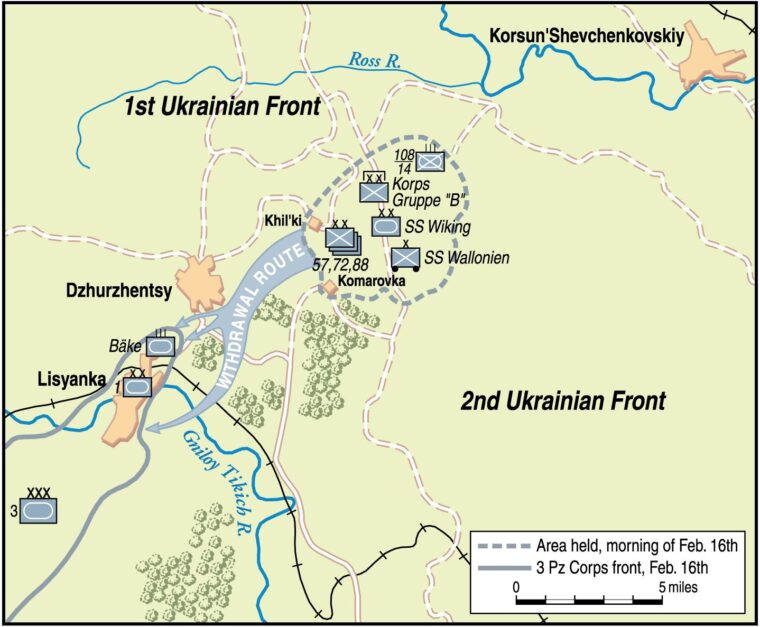
Four to five miles now separated Breith’s spearheads and Group Stemmermann. Heavily laden with ammunition, Kaestner’s regiment led the 72nd Infantry Division from Khylky. The time was 11 p.m. on February 16, the sky dark and moonless. The temperature had dropped and cold winds whipped through the snow covered gullies and over the icy hills. To remain as inconspicuous as possible, the men had been forbidden to have fires, to smoke or to speak. Again, the 105th Regiment achieved surprise and dispatched the Soviets of the first defensive belt with close combat weapons. Reconnaissance teams next spotted T-34s guarding the road south of Zhurzhyntsi. Kaestner’s men used the terrain to sneak past the Soviet tanks. They reached the second, outward, defensive belt, where Soviet soldiers in foxholes faced west. Caught asleep, the Soviets were killed with knife thrusts, entrenching tools and rifle blows, but managed to get off a few shots. The alarmed Soviet tanks switched on their searchlights, exposing the battalions of the 72nd Infantry Division following the 105th. Kaestner and his men slid away into the dark, only to come across more tank silhouettes. Their hearts leapt with joy when they saw the German crosses–they had reached the III Panzer Corps.
The experiences of Corps Detachment-B and SS-Wiking, on the northern and southern flank of the breakout, respectively, mirrored that of the 72nd Infantry Division. The lead battalions caught the surrounding Soviet positions off guard and had a chance of infiltrating through the tank screen. In contrast, the majority of Group Stemmermann, which lacked sufficient antitank weapons, was deflected south by the alerted tanks along the Zhurzhyntsi-Pochapintsy road. Soviet mortars, artillery, antitank guns and machine guns raked and blasted the German columns caught in the open. Due to the darkness and snow storms, the aim of the Soviets was poor. In the chaos, German unit cohesion soon broke down.
The toughest task fell to the rearguard, which faced an alerted enemy and lost the benefit of darkness. On the northern corner of the pocket, the 88th Infantry Division held out until 5:15 a.m. The 57th Infantry Division abandoned its positions at Komarivka an hour later. Around the same time, General Lieb led the last infantry column west out of Khylky. Wearing his tall white fur cap and mounted on his gelding, Lieb rode into the snow storm. At Novo Buda, the Walloon platoons disengaged one after another, the last holding on until 10 a.m. Among the last tanks of Group Stemmermann sacrificed themselves on the eastern edge of Shenderivka, fending off T-34s and new Joseph Stalin II’s. “They plowed up the snow with their treads as they departed through the tangle of the retreating army. Not one returned,” wrote Degrelle. Near Pochapintsy, Stemmermann likewise met his end as his half-track was hit by an antitank gun.
Nazi atrocities and the scorched-earth strategy of the retreating Germans further inflamed Russian hate. Soviet tankers reaped grim vengeance on German wounded piled on panje wagons. Screaming men and shrieking horses were flattened under tank tracks. Soviet soldiers claimed they found wounded Germans shot in the back of the head and ambulance vans set on fire with the dead inside. Undoubtedly, this was to spare the them torture and mutilation by the Reds.
West of Pochapintsy, Corporal Fritz Hamann of Panzerjäger Battalion 389, alongside his Staff Sergeant, crept up to Soviet tanks on top of the slope. Busy firing on the Germans further downhill, the tankers failed to notice the men carrying three Panzerfausts each. One after another, Hamann and his Staff Sergeant knocked out five tanks. The 5.9 inch bomb projectiles easily penetrated the T-34 armor. The eruptions of fire and smoke provided cover for the Panzerjägers. As the remaining four tanks fled, a way had been open to the beech wood southwest of Pochapintsy.
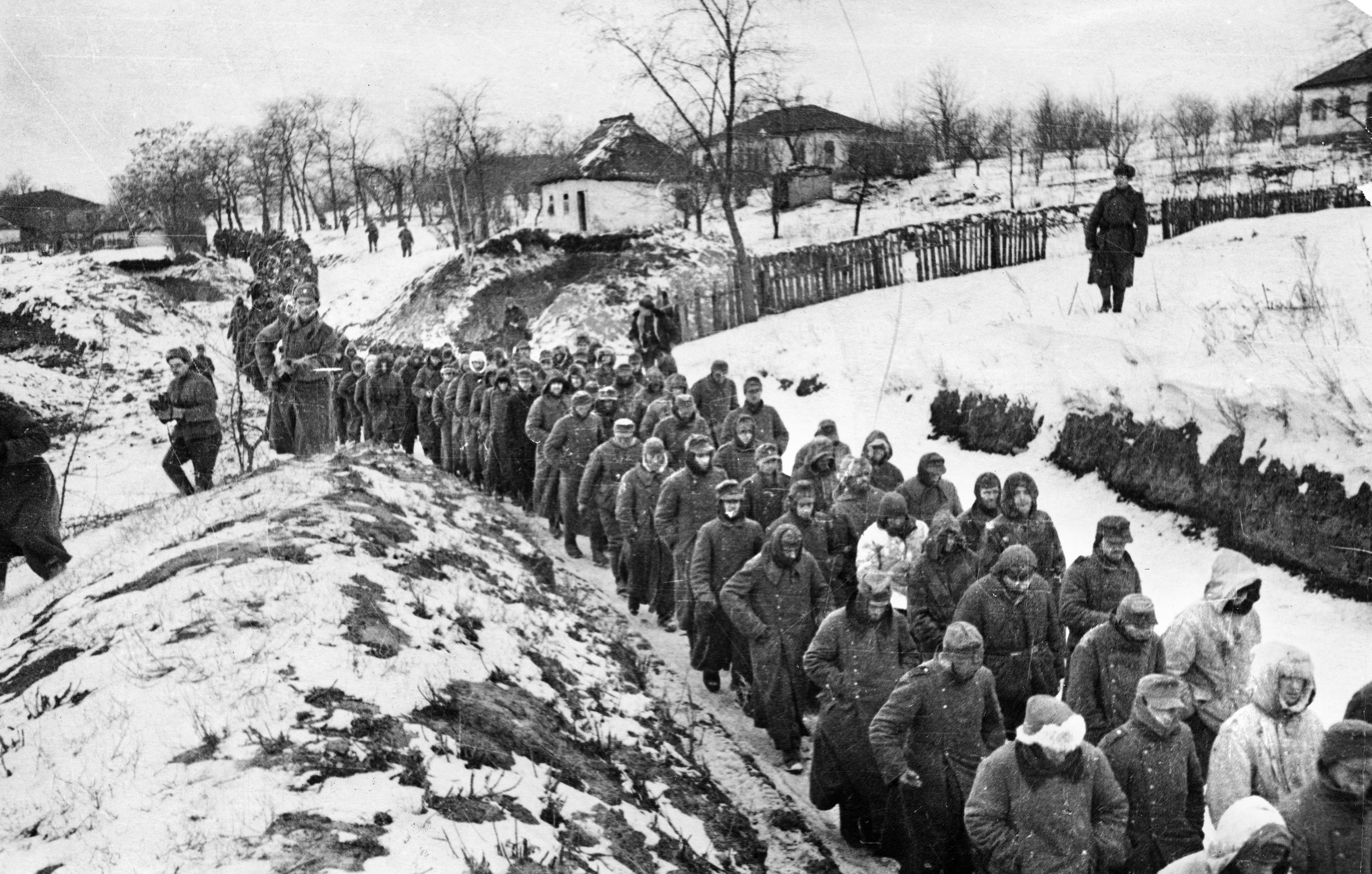
Although it was defended by Soviet machine gun positions, the wood provided safety from Soviet tanks and made it possible for groups of Germans to fight their way through to Lysianka. Among them were Degrelle and most of the Walloons. Having survived tank fire and Cossack cavalry charges, the Walloons took up position in the woods south of Hill 239. Joined by several thousand stragglers, including Ukrainian civilians fleeing the Russians, the 632 Walloons reached the outpost of the 1st Panzer Division on February 18.
Most of the Germans, including Hamann’s Panzerjägers, skirted the wood to end up along the Gniloy Tikich. The men of the 72nd Infantry Division were first to reach the river. Although only 20-30 yards wide, the swiftly moving water was 30 feet deep and the banks were steep. After dawn a Soviet tank appeared, firing on German supply vehicles, but then drove into a deep gully and got immobilized. Throughout the day and into the night, intermingled units of Corps Detachment-B and SS-Wiking arrived at stretches of the Gniloy Tikich. Attempts to create a bridge with panjes, shrubs and small trees, were unsuccessful, as the current carried them away. Soviet artillery blasted the Germans bunched together on the eastern bank. As more T-34s rumbled closer, soldiers tried to swim the river. Weak from cold and exhaustion, hundreds were pulled under by the swirling waters. Lieb urged his horse into the river. The general made it across, but his exhausted horse was drowned.
Hamann tried to cross where the river was frozen almost to the middle, crawling on his stomach as the ice cracked, then gave. After half an hour of clinging to ice floes, he grabbed the butt of a carbine held out to him. Behind Hamann, his staff sergeant succumbed to the current.
The 57th and 88th Infantry Divisions were last to arrive at the river. With them were Ukrainian women who had served the Germans in auxiliary positions and feared Soviet reprisals. Fortunately, by the morning of February 18, foot bridges had been built allowing many, including panjes with 600 wounded, to reach the other side.
Wet and freezing, harassed by sporadic Soviet fire from the other bank, the survivors staggered on toward Lysianka. The first aid station in a large factory building was swamped with thousands of wounded. The stench was overpowering. Discarded field bandages infected with lice littered the floor. Medical staff wraped their boots with bandages drenched in Lysol to keep the lice off. The hardships endured by the survivors meant that most were incapable of combat for months.
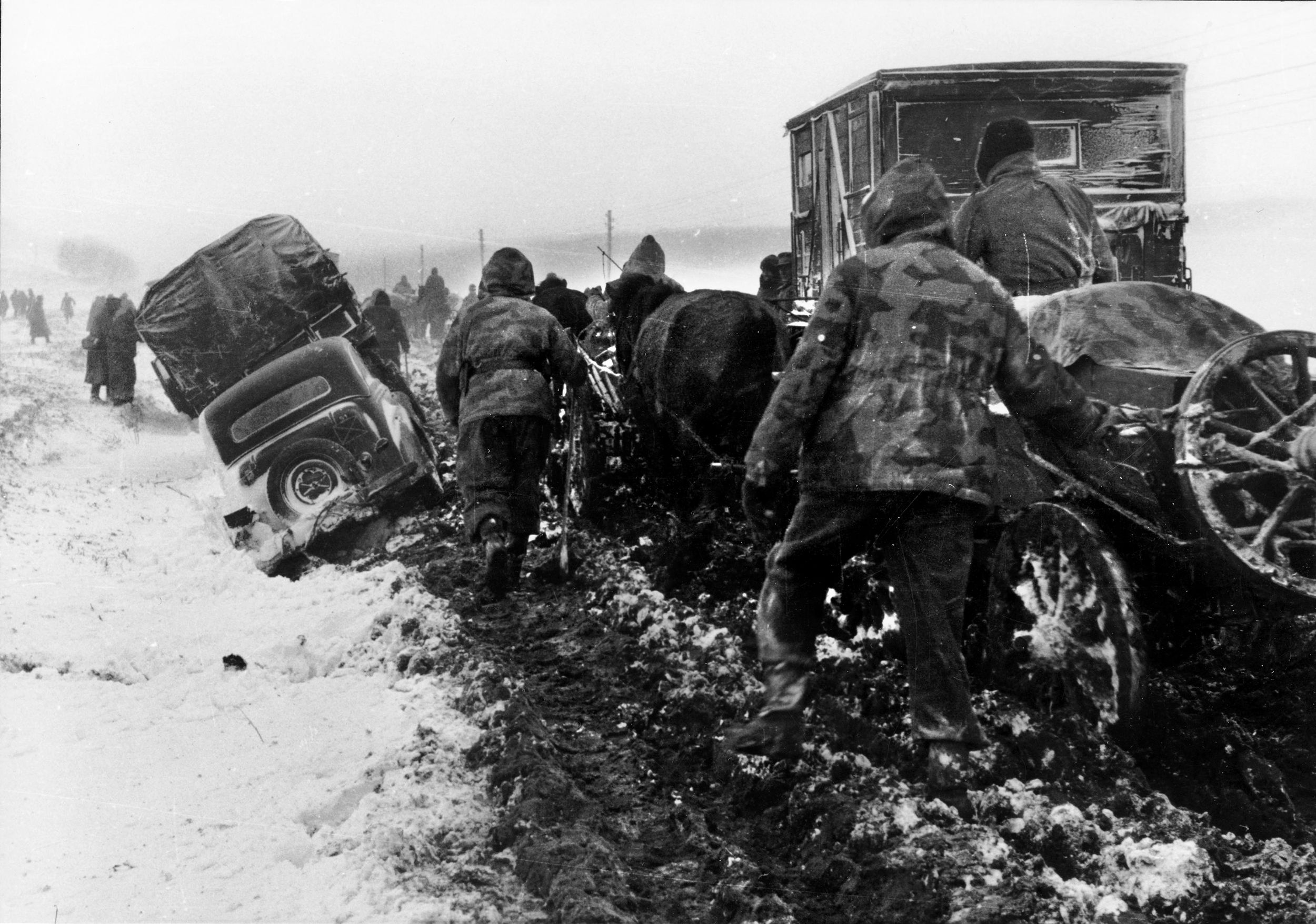
On the night of February 18-19, Lieutenant Fadin’s gallantry at Dashukivka earned him the recommendation for the Golden Star of the Hero of the Soviet Union. According to Fadin; with his lone T-34, he suppressed German MG positions, squashed a Nebelwerfer rocket launcher and enabled the Soviet infantry to recapture the village. Taking cover behind a hut on the northern edge, Fadin’s T-34 set a German vehicle column ablaze, blasted a group of German officers observing him with binoculars, shot up two Mark IV’s trying to outflank him, and shot down a German reconnaissance plane. Fadin fired his tank machine gun and fragmentation rounds into counterattacking German infantry. He knocked out a Tiger at 150 yards. “Flame was slowly enveloping the Tiger. One crewman was hanging dead from the turret,” said Fadin. His T-34 then took two hits from an assault gun, killing the gun loader and mangling the turret. Fadin jumped out in time and ran for cover just before the T-34 got hit by another round. Seeing his driver still alive, but caught between the lid of the driver’s hatch, Fadin ran back under fire. Fadin freed the bleeding driver and carried him on his shoulders to safety.
On February 19, III Panzer Corps pulled out of Lysianka. Out of the 59,000 men encircled in the Korsun pocket at the beginning of the battle, 28,000 soldiers and 1,000 Hiwis made it out unscathed. Eleven thousand wounded were either evacuated by air earlier in the battle or were brought out during the breakout. Nineteen thousand were killed or taken prisoner. Three hundred thirteen guns and howitzers and 50 tanks were lost. In addition, 1st Panzer Army and 8th Army suffered a combined 10,000 casualties, two thirds of which were wounded. Two hundred forty tanks and assault guns had been lost. Only a third of the armor was lost to enemy fire, the majority broke down and could not be recovered.
Mentioning Soviet losses was officially forbidden under the Communists. After 1990, when archives became available, it became possible to determine how severely 1st and 2nd Ukrainian Fronts had paid for their victory. Eighty thousand casualties, including 24,000 killed and missing, had been suffered. Tank and assault gun losses amounted to a staggering 850.
On February 18, 224 guns fired a 20-shot salute in Moscow to celebrate the annihilation of the Korsun pocket. Soviet propaganda boasted of twice the actual German casualties and inflated German tank losses by 200 percent. Stalin credited Konev and the 2nd Ukrainian Front and promoted him to Marshal of the Soviet Union.
The gap between the 8th Army and 1st Panzer Army was resealed by a counter-attack of the Panzer divisions. The Korsun battle had hit the Germans hard. The divisions of Group Stemmermann needed to be rebuilt and refitted. The Soviets had broken the German hold on the Dnieper and pushed the enemy further west. High Soviet losses in exchange for victory would continue until the end of the war. Another nine million Soviet soldiers would die, be wounded, or be taken prisoner, before the Red Army stood victorious in the ruins of Berlin.
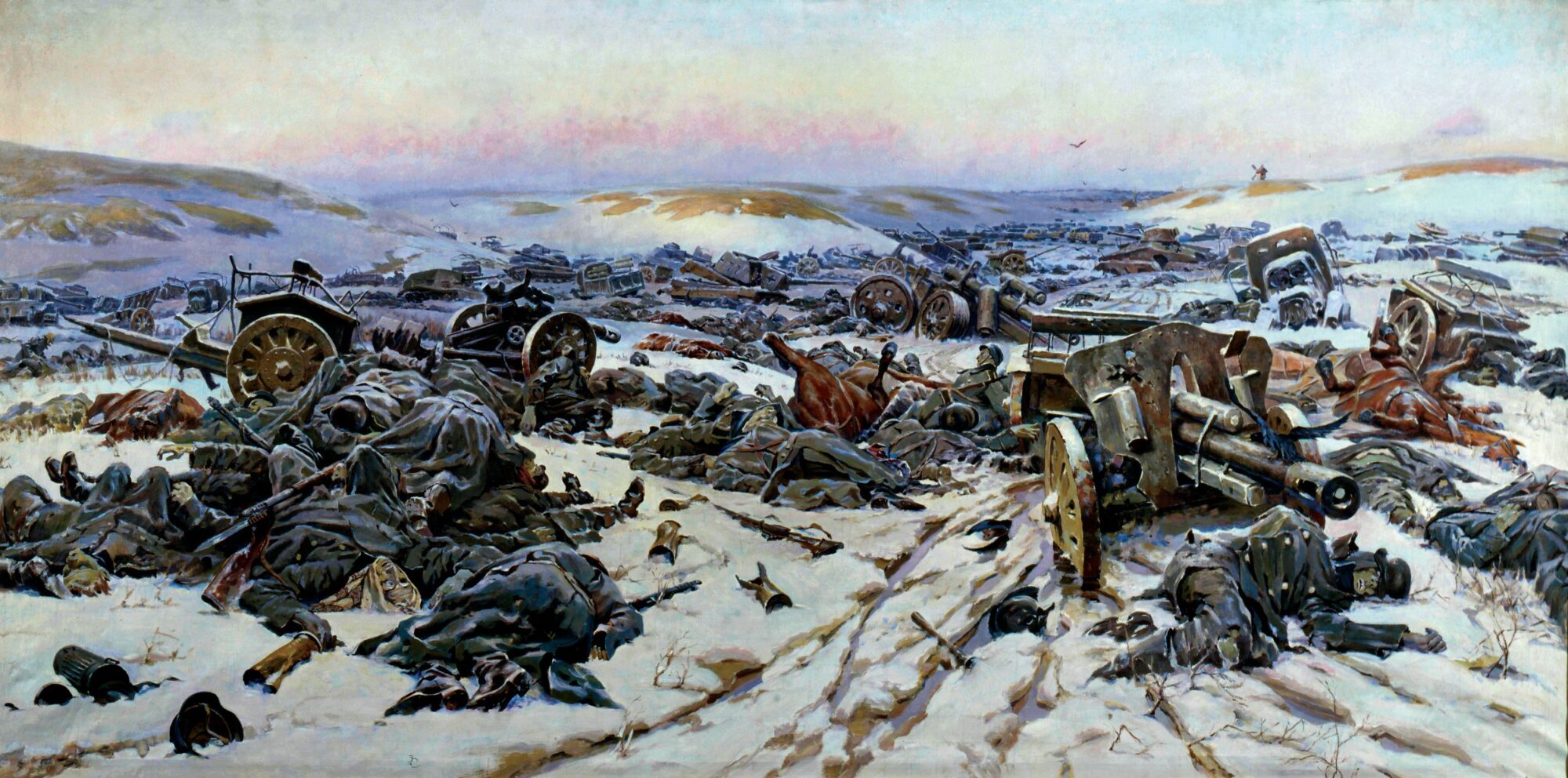
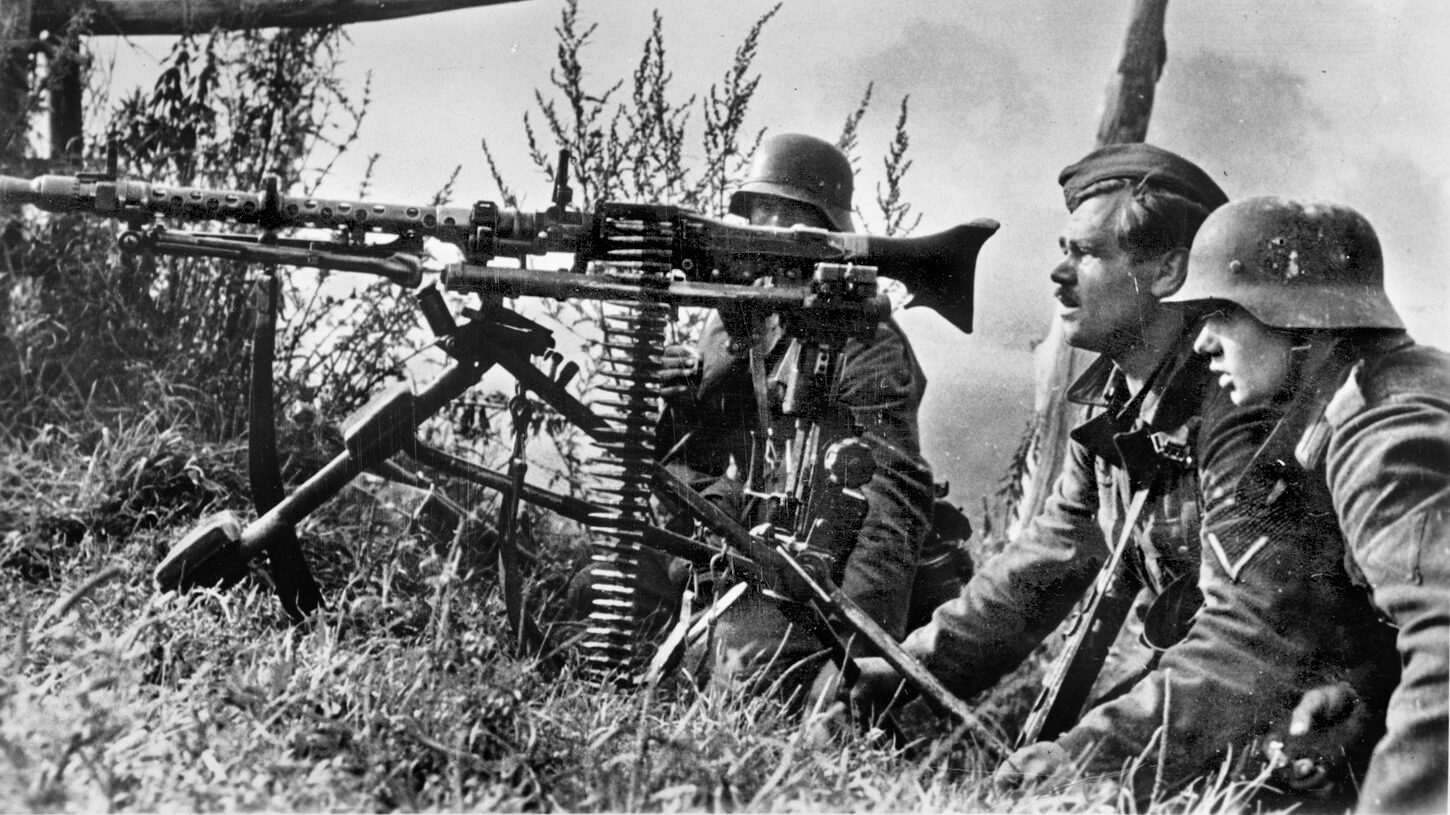
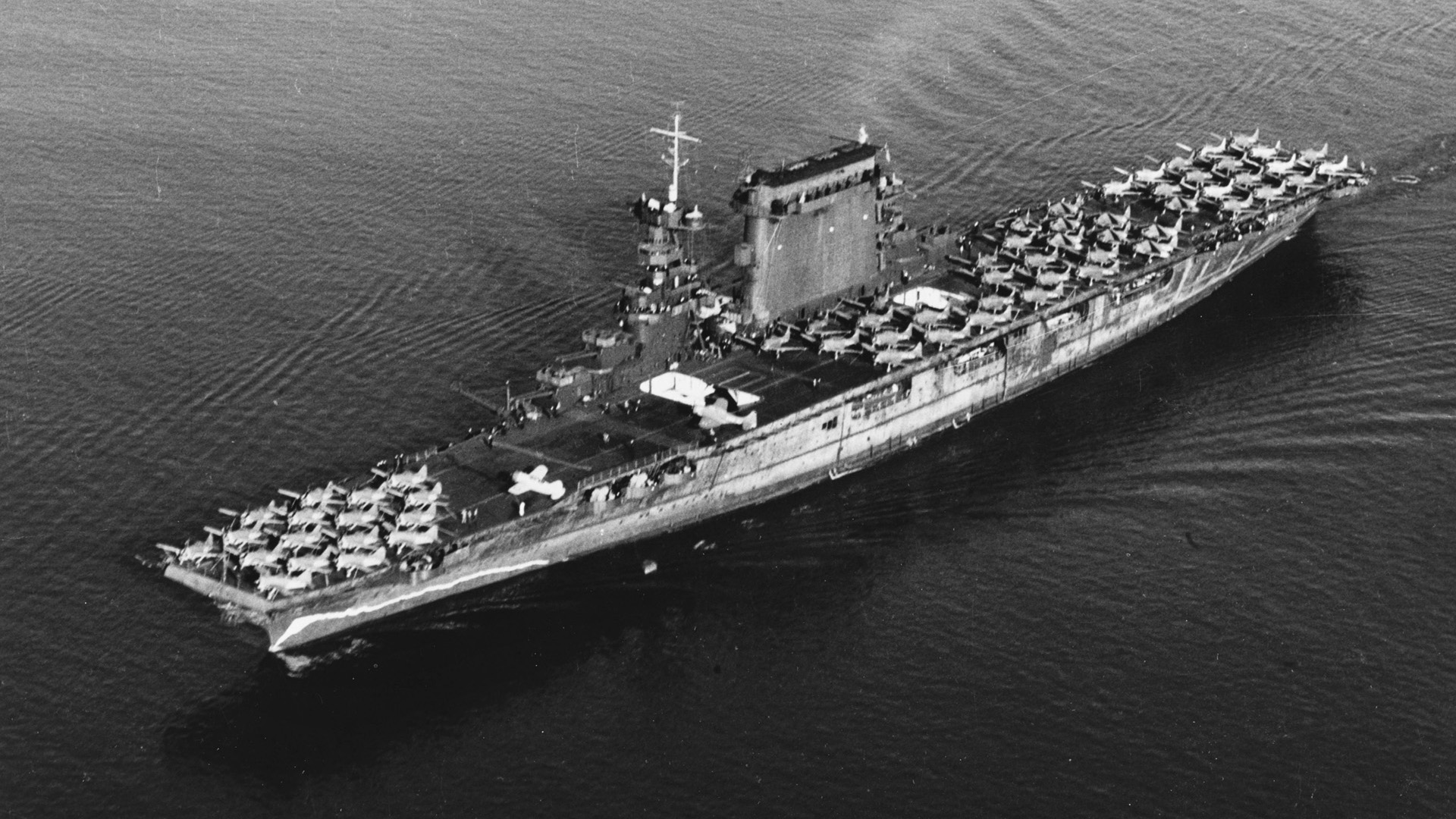
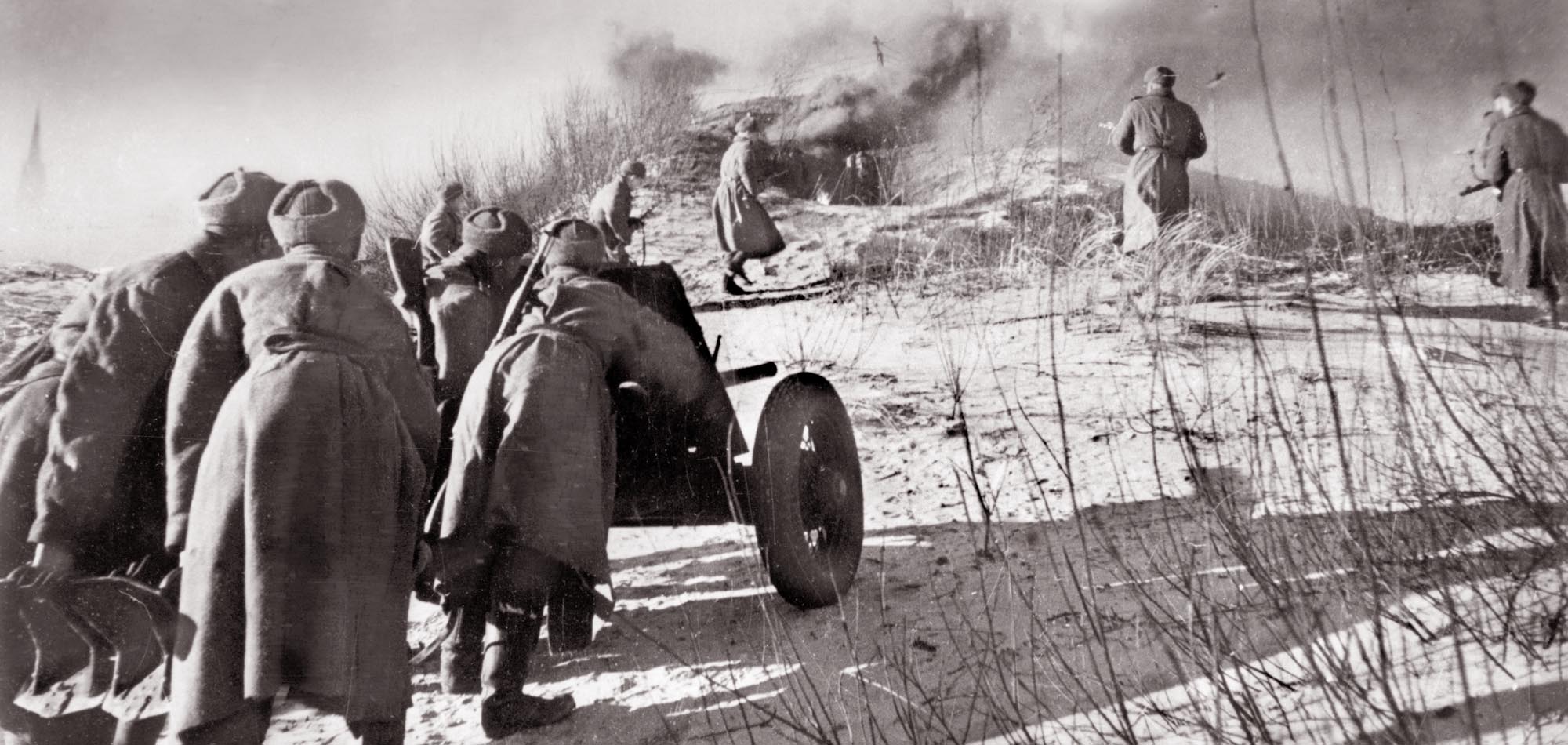
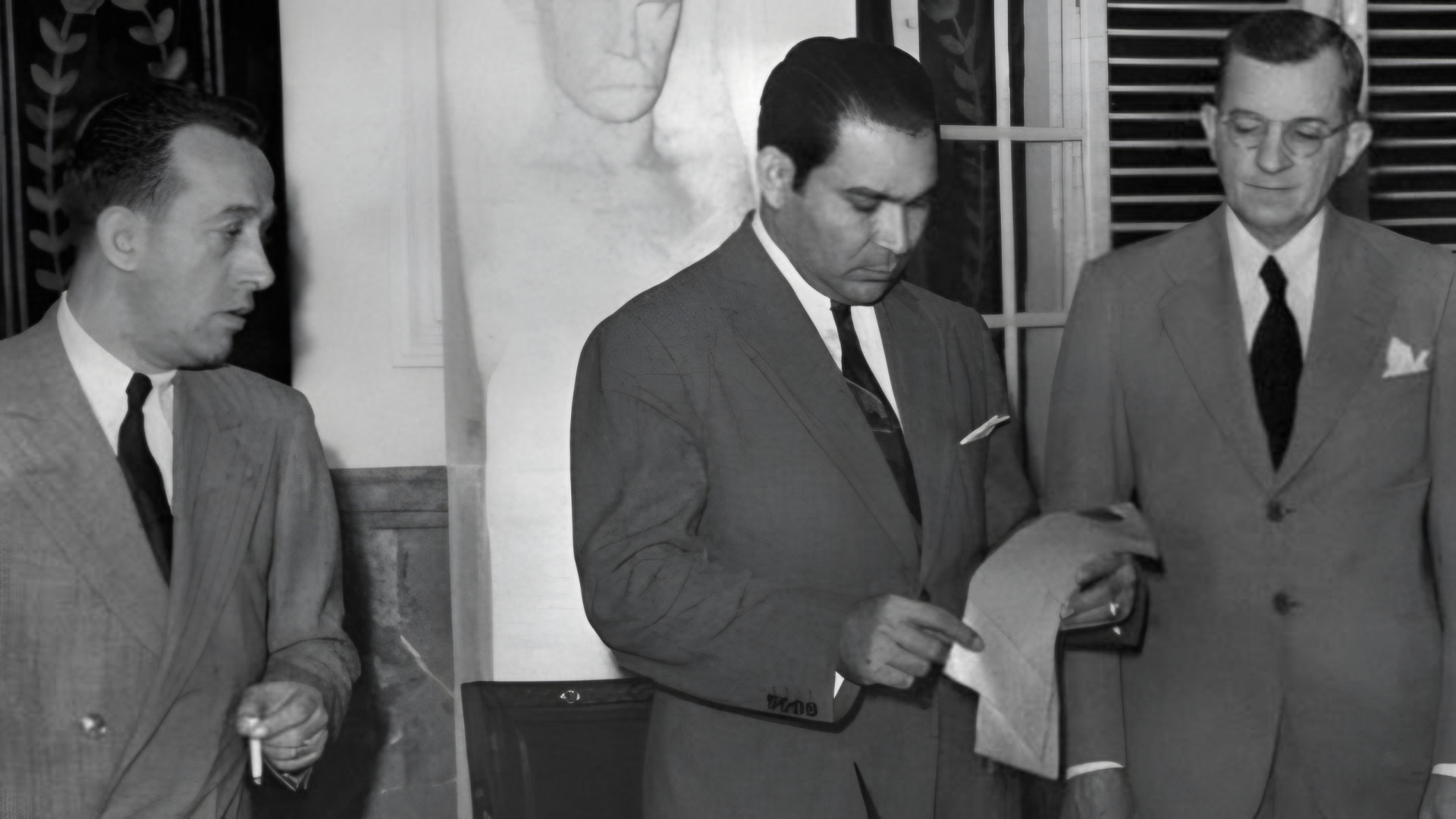
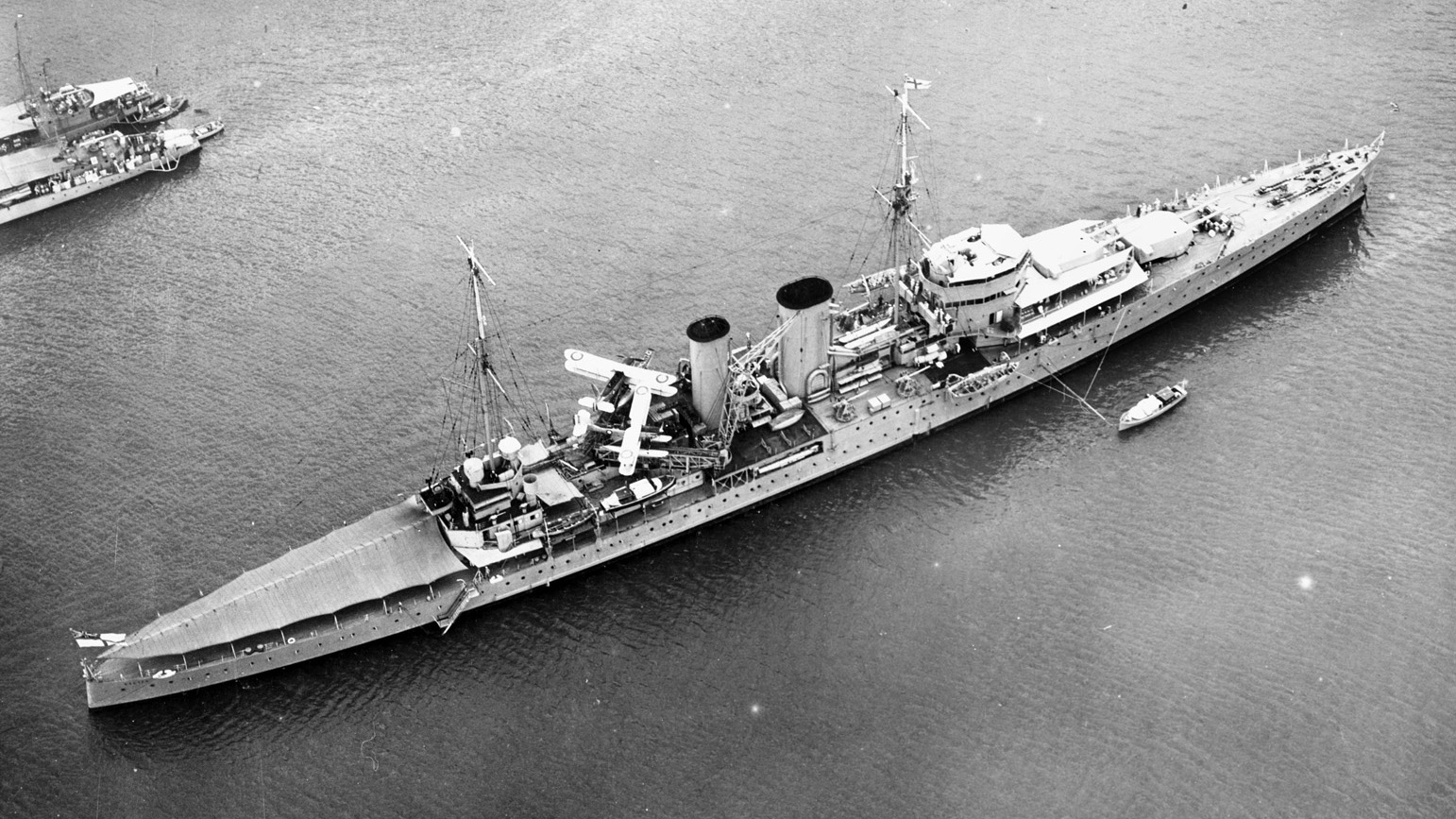
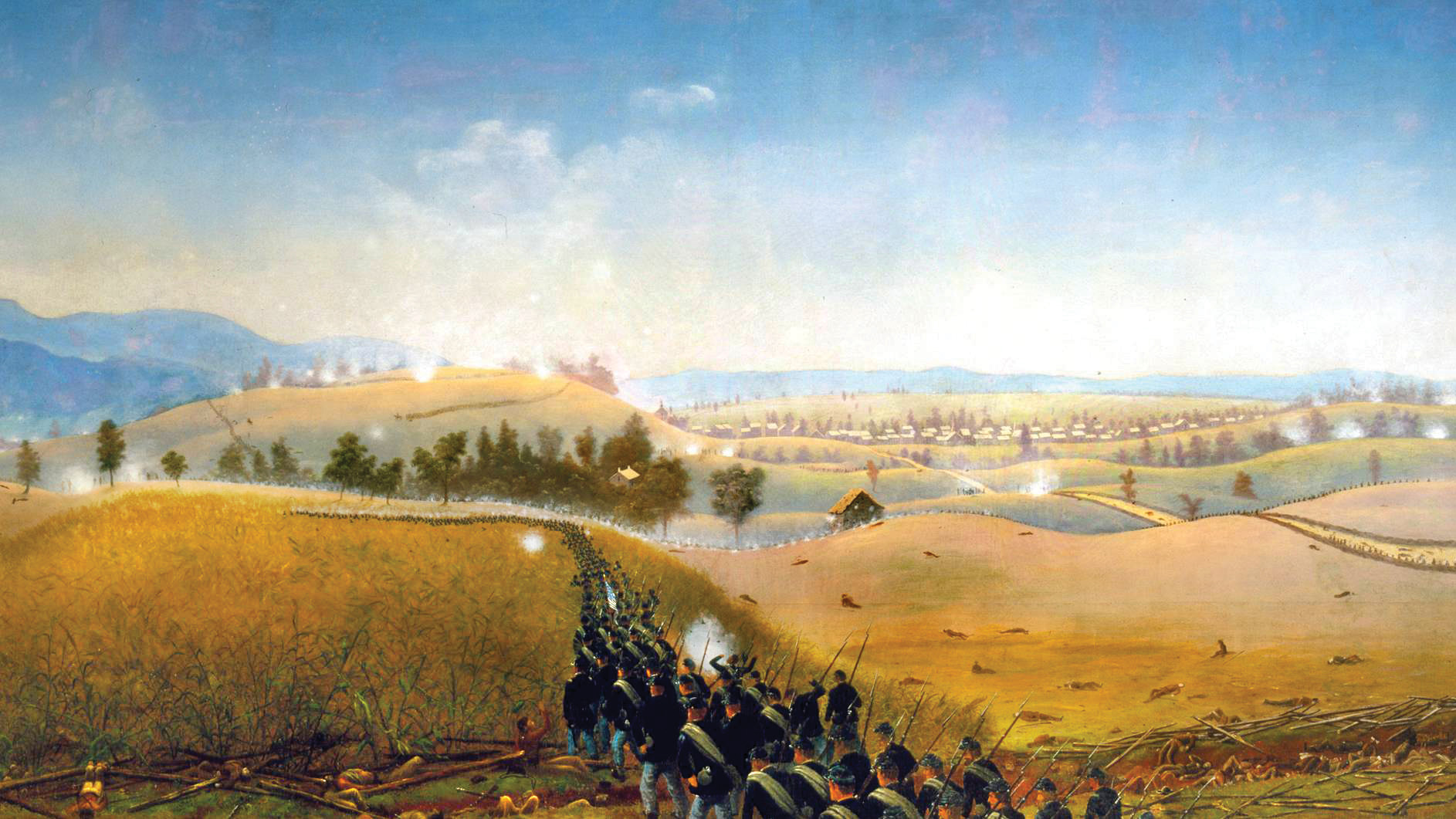
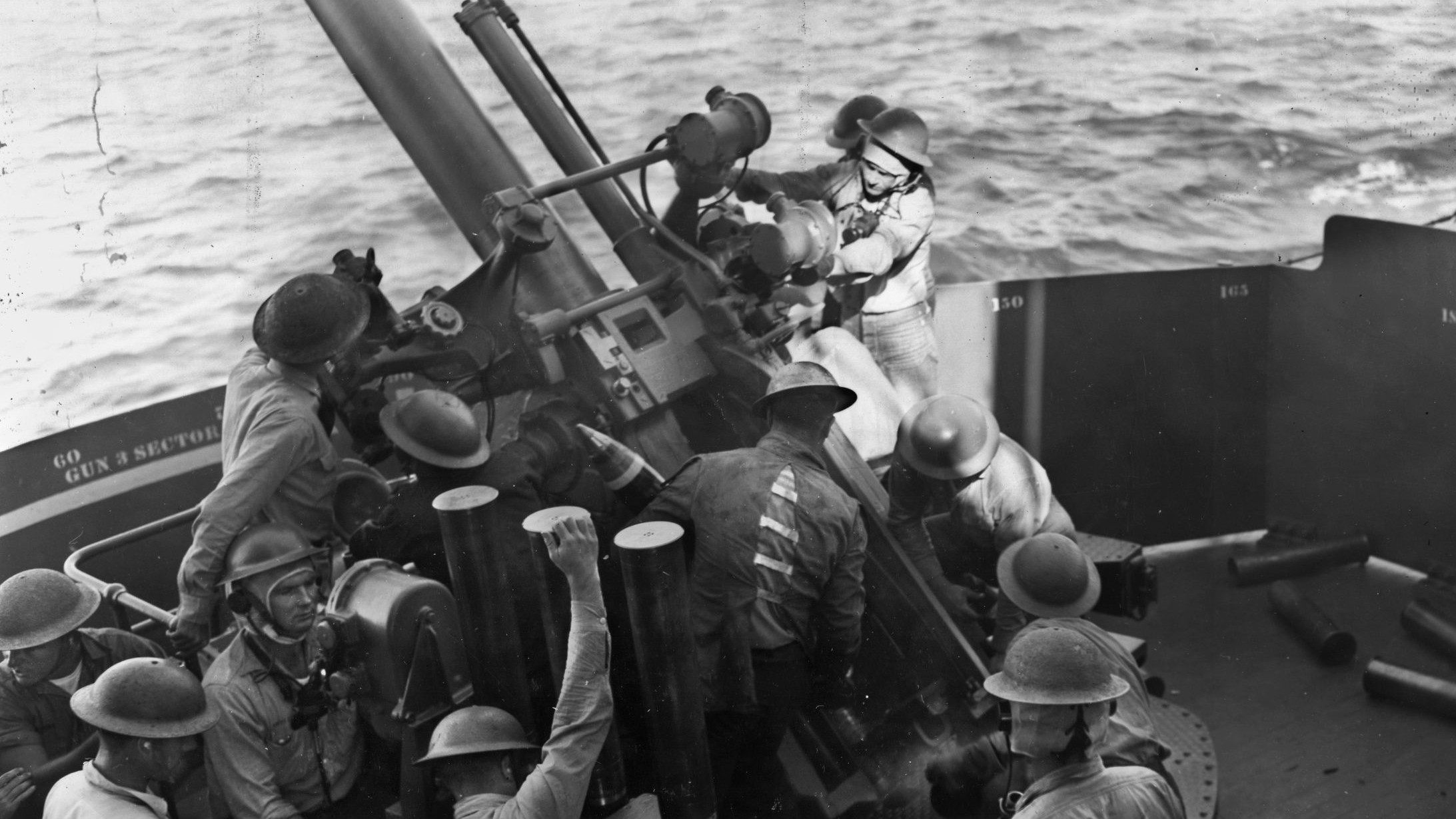
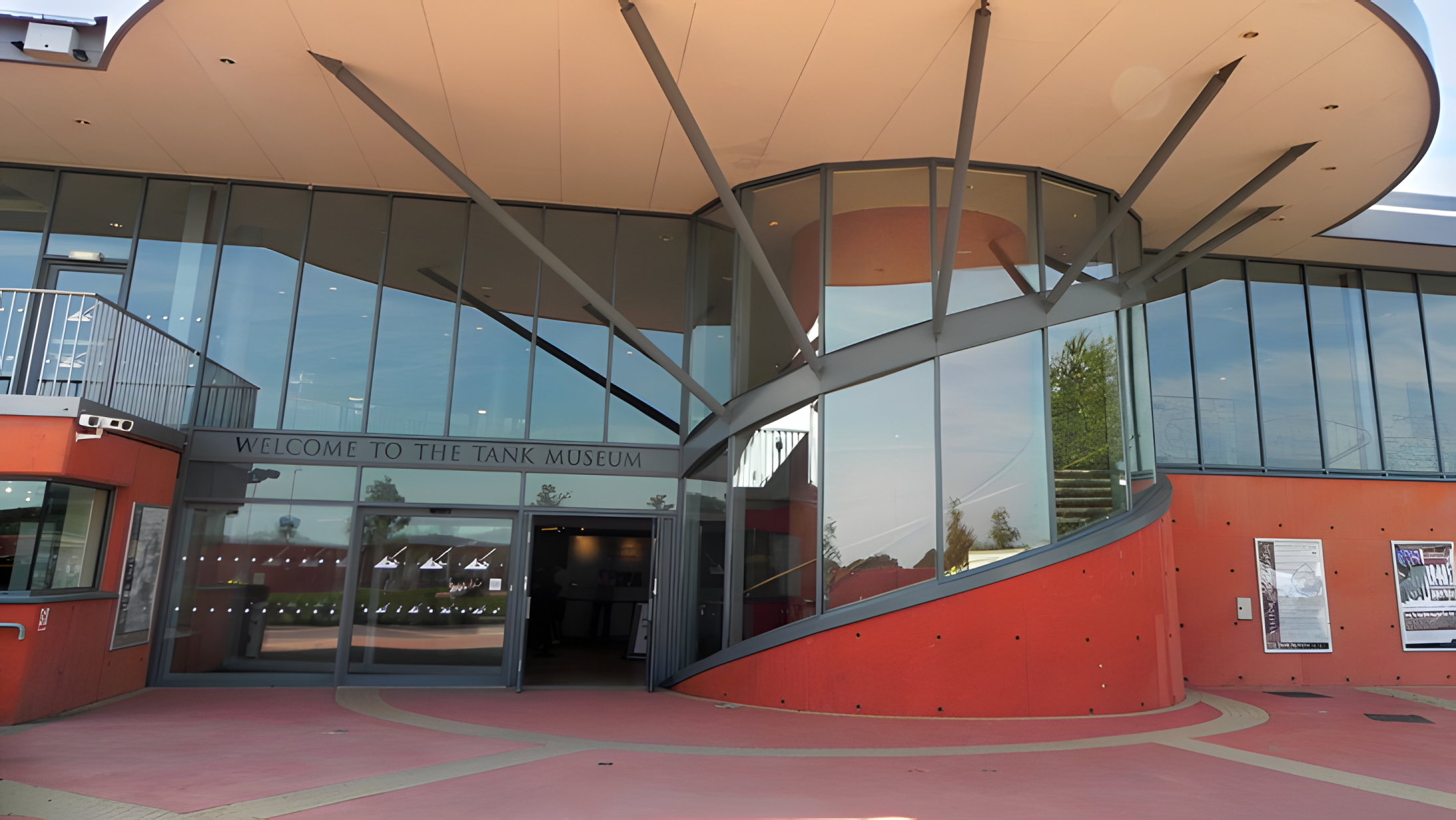
Two comments:
1. Articles like this seem always to be written from the German point of view.
2. This article has a vague resemblance to those about the “glorious confederates” who fought bravely but were overwhelmed by superior numbers of not so brave federals.
Regarding the point of view, German military records, as well as many of the German participants, have typically been much more available to western historians than their Soviet counterparts. For instance, we have published interviews and memoirs from German soldiers of lower rank, but have not seen much like that from the Soviet side. There are likely several reasons for this, including Cold War politics, and this probably contributes to our somewhat one-sided view of the war on the Eastern Front.